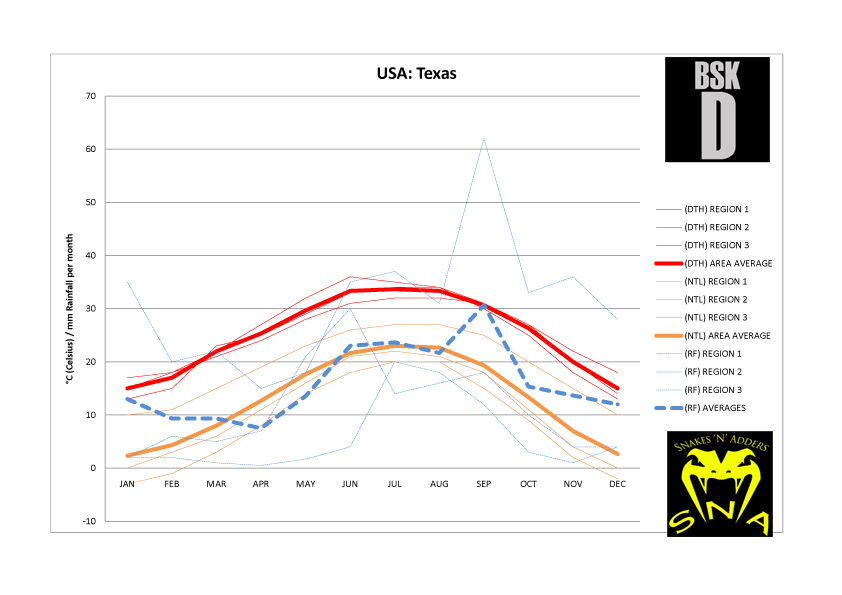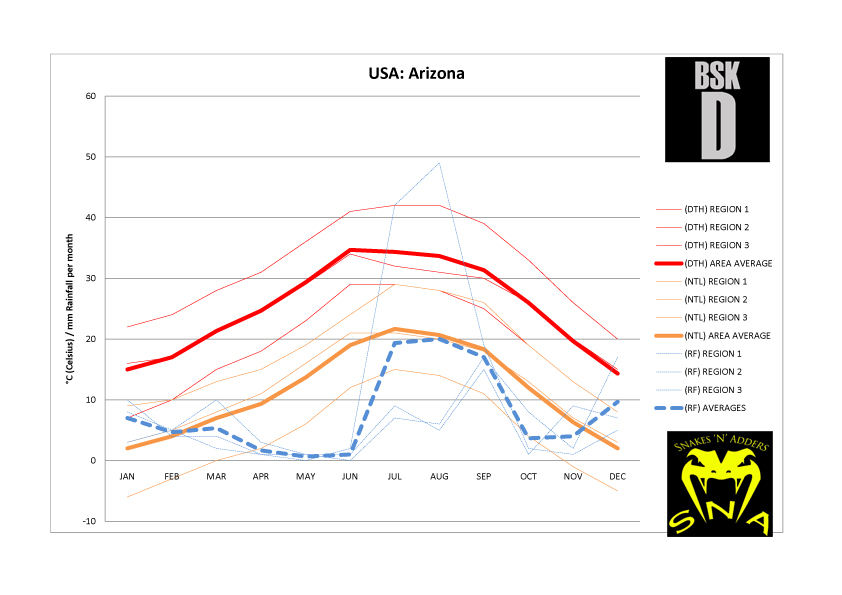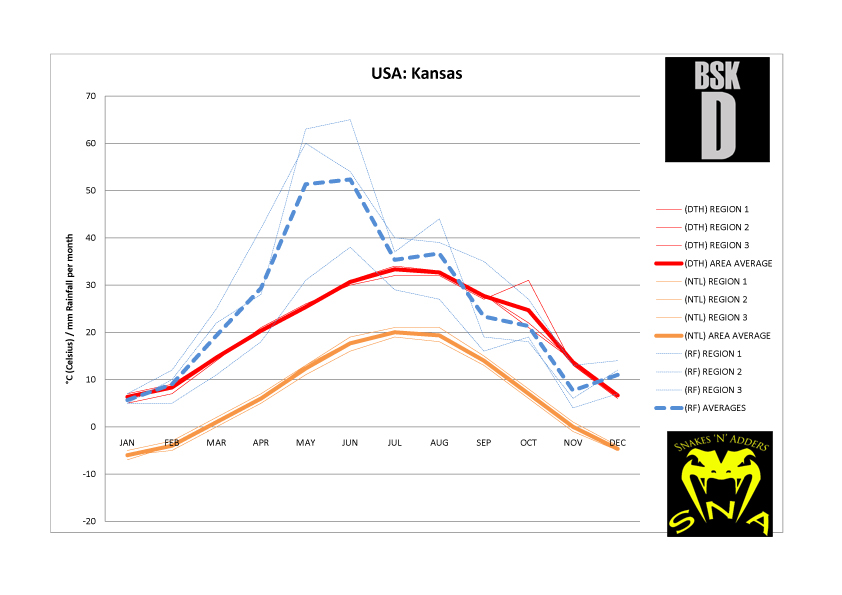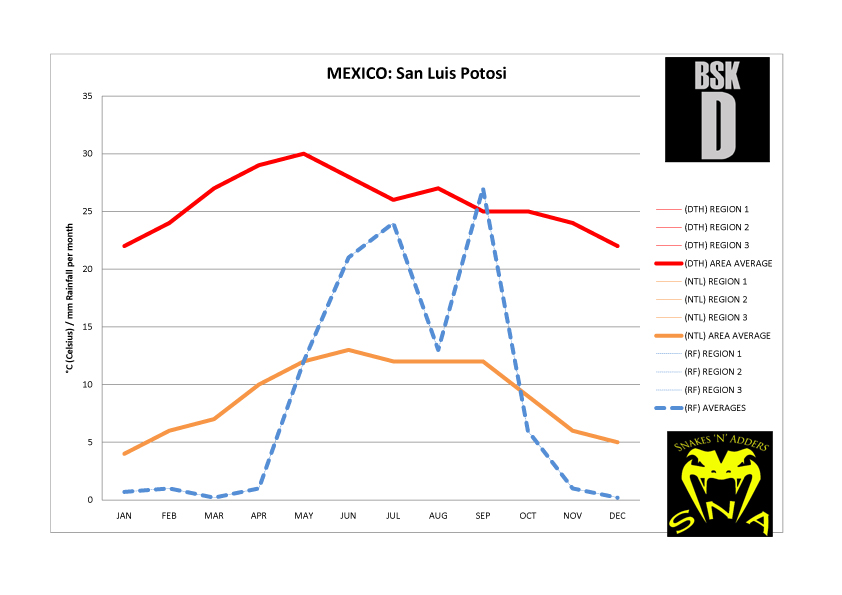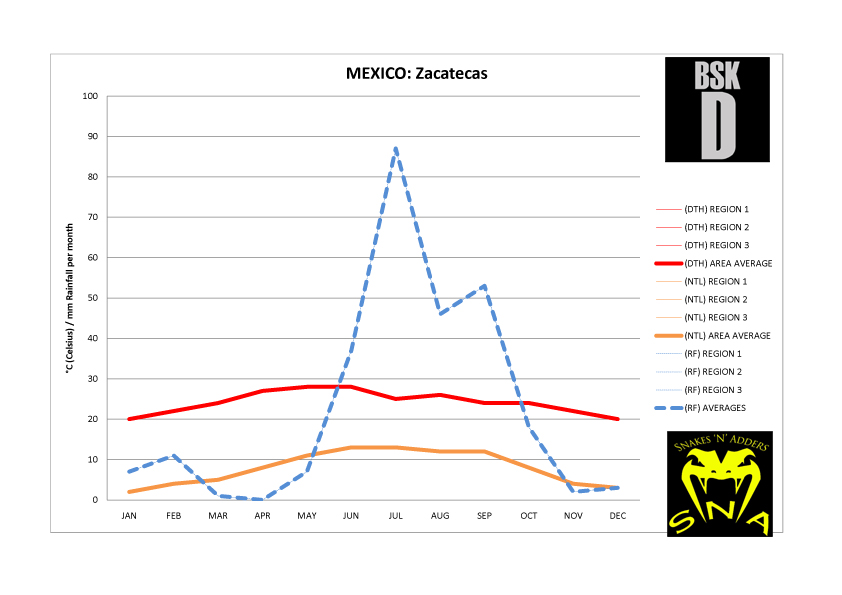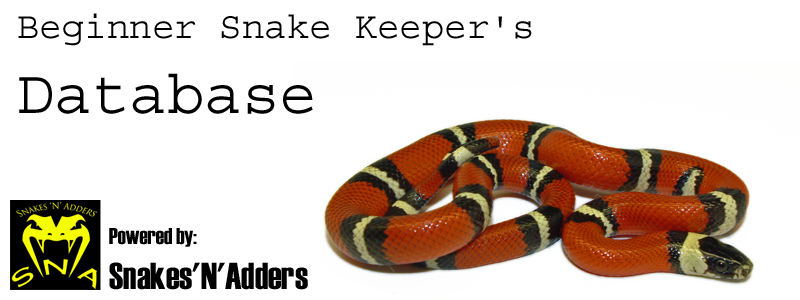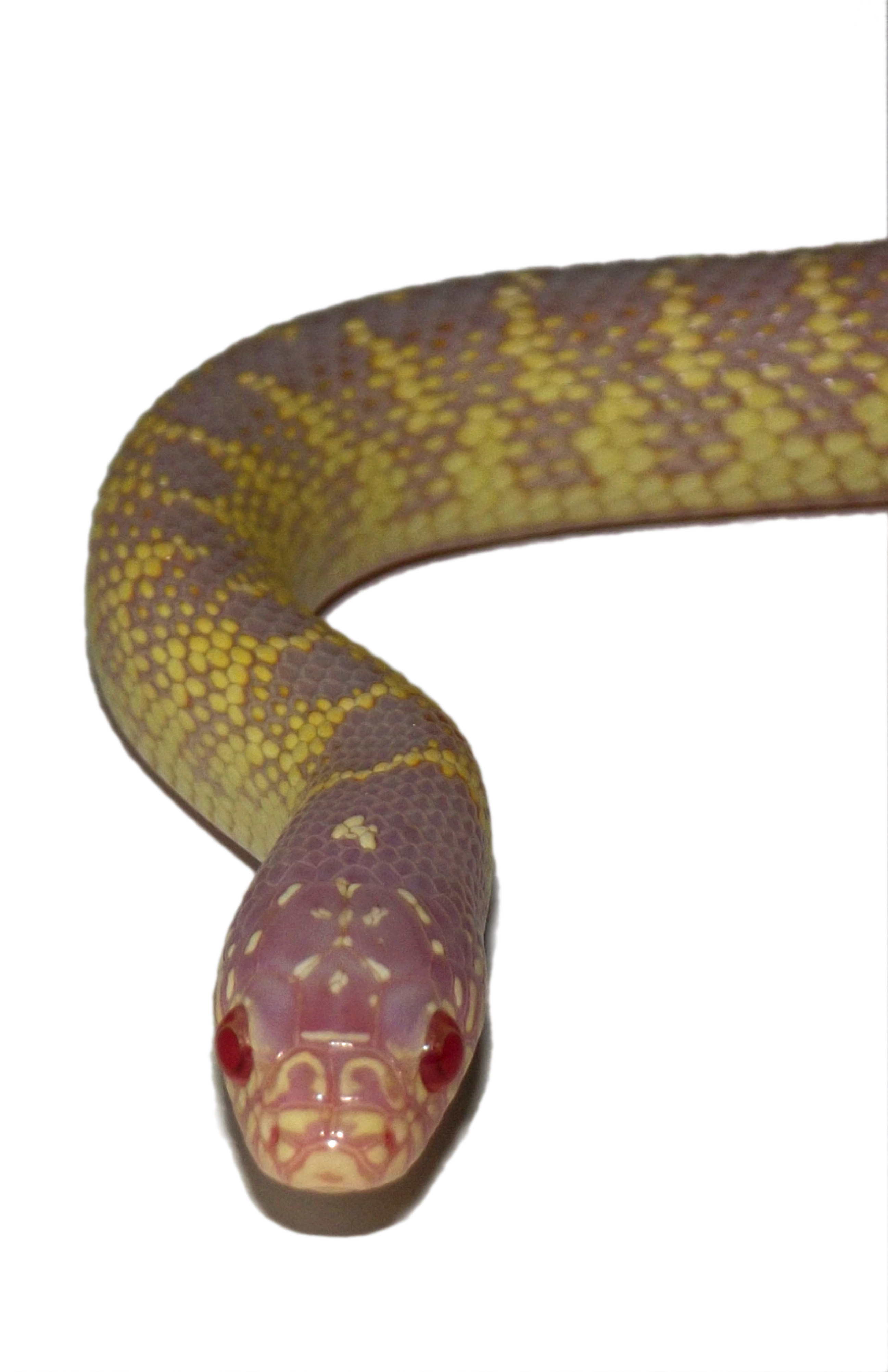
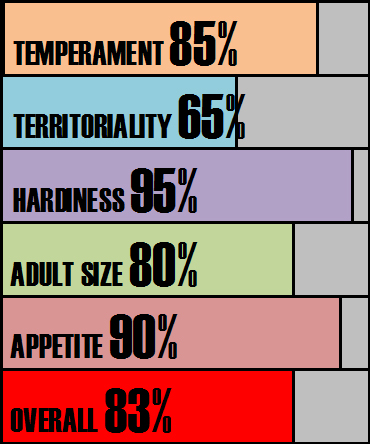

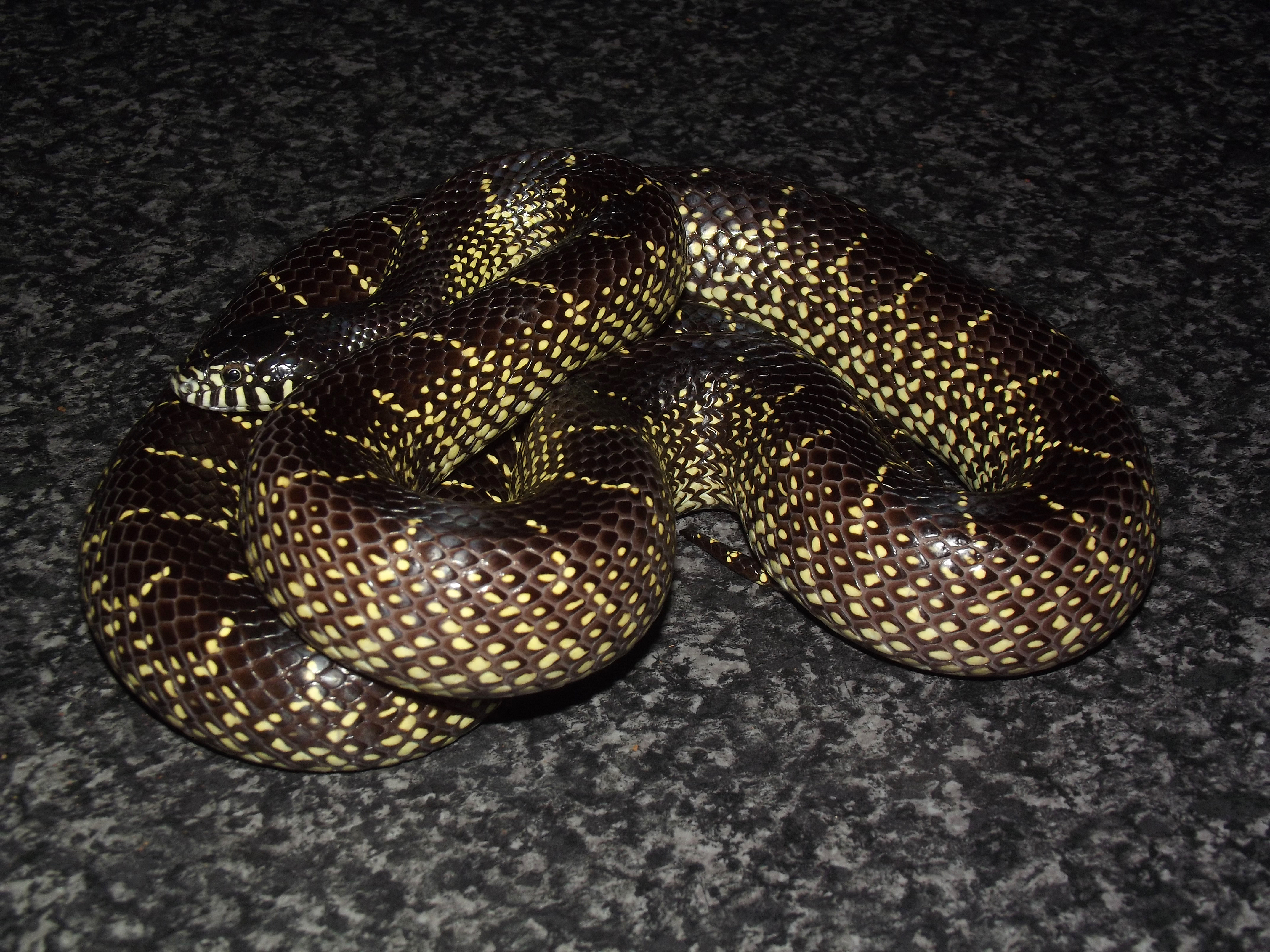
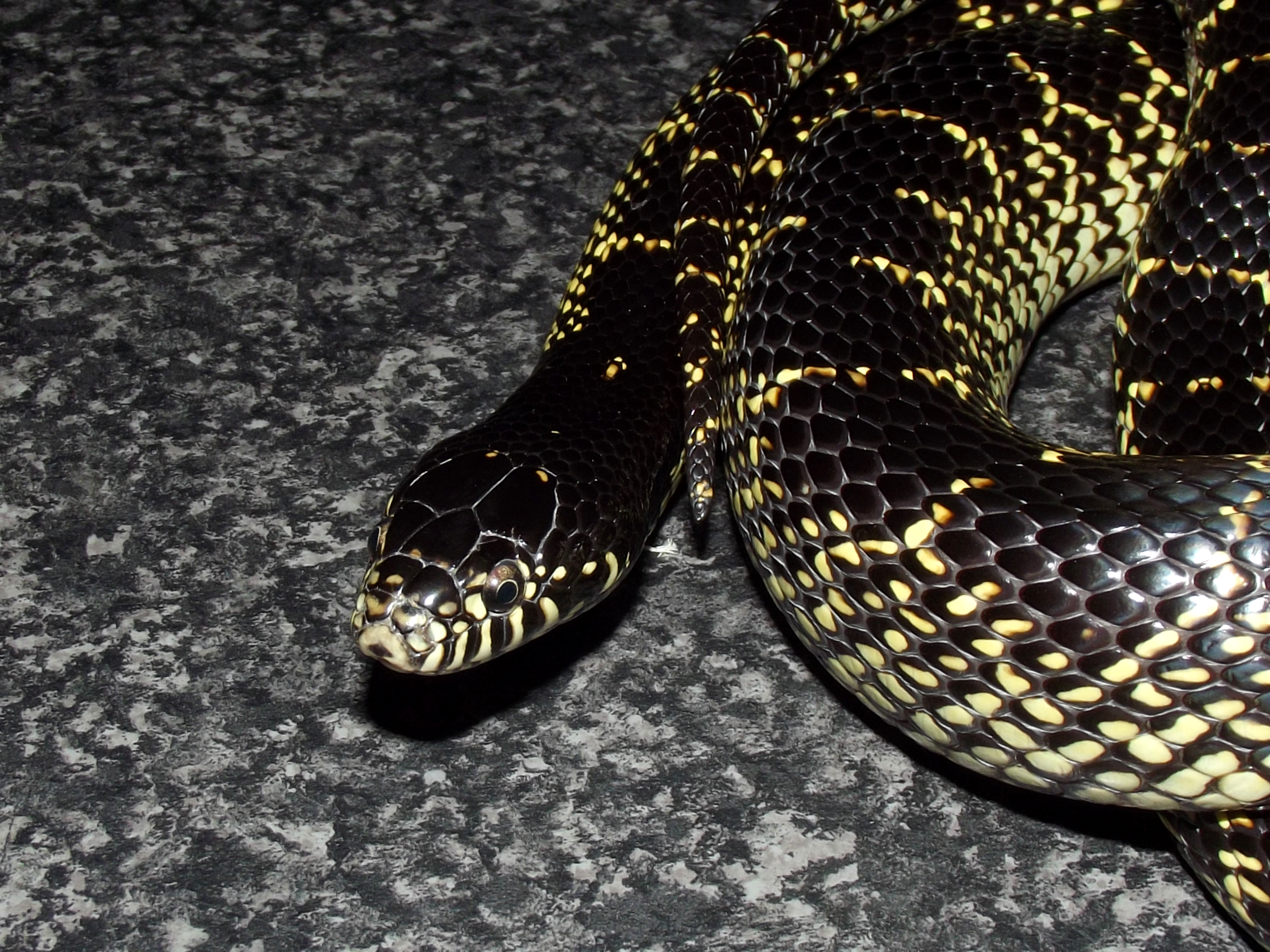
.jpg)
Species Notes based on experiences:
Desert King Snakes are one of the jewels of the North American King Snakes. Stunningly beautiful. The striking pattern and gloss black head make is a particularly aesthetic King Snake. Invariably smaller than the coastal forms of King Snake in captivity it draws many parallels to the Speckled King Snake (Lampropeltis holbrooki)
Score analysis:
For the most part Desert King Snakes are ‘steady’ when being handled. Some may remain quicker than others and react to movement more jerkily than say a corn snake. They have never really shown themselves to be overly aggressive. Certain individuals may be very food orientated and may bite out of stupidity rather than aggression. Thankfully King Snakes have tiny teeth and this is usually a painless experience.
The occasionally nervous nature of the young can make them highly defensive in the enclosure. Flattening of the head, hissing, mock strikes, tail rattling and the use of the musk gland can waving of the tail are all pretty much standard procedure. This accounts for why the territoriality score is so much lower than the temperament score. Usually once removed from the enclosure compliance is quick to follow. These episodes with youngsters are fleeting and the keep just has to persevere to get to the compliance stage.
Occuring in central and Southern USA and venturing down into Northern Mexico this species has adapted to a range of environments and has proven to be a successful subspecies.
All North American King Snakes are ready eaters. So keen with food in fact that they can misjudge a finger occasionally for prey. Usually within a minute or so they realise the error of their ways. This is not always the case but it does happen from time to time.
Enclosure recommendations:
Tub:
50 ltr, but very large specimens may make this style inappropriate
Vivarium:
120cm x 45cm x 45cm
Budget rig: -
40cm x 30cm heat pad
On / off thermostat
Digital thermometer to monitor thermostat performance
Warm hide
Cool hide
Water bowl
substrate
Recommended rig (vivarium only): -
250w ceramic heat emitter
Ceramic lamp holder and bracket
Bulb guard
Day night thermostat
Digital thermometer to monitor thermostat performance
Various logs and caves along the thermal gradient
Damp hide
Climbing and exercise branches
Plants and foliage (live or artificial – your choice)
Water bowl
Substrate
UVB light (8w T5 shade dweller 7% kit from Arcadia or equivalent) (optional)
Subterranean section to vivarium for further psychological security (optional)
Climate analysis:
Desert King Snakes have one of the largest distributions of the ‘getula’ King Snakes. They are highly adaptable to seasonal changes. They occur from pretty harsh environments with defined single hot and cool seasons. Most areas have a pronounced wet and dry season. Where the dry season is exactly that and a period of drought can be expected. This coupled with other factors helps to explain the inherent hardiness of the subspecies.
Conclusion:
King Snake breeders and fans have a soft spot for this beautiful King Snake. When you see the pictures it is easy to understand why. Whether in normal or albino form this snake is arrestingly aesthetic. A perfectly acceptable choice as a beginner species although a novice keeper would be better working with and establishing a regular handling routine with a younger animal to try to dissuade any ‘biting’ issues later in life. If worked with regularly enough any such issues for the most part can be avoided.
